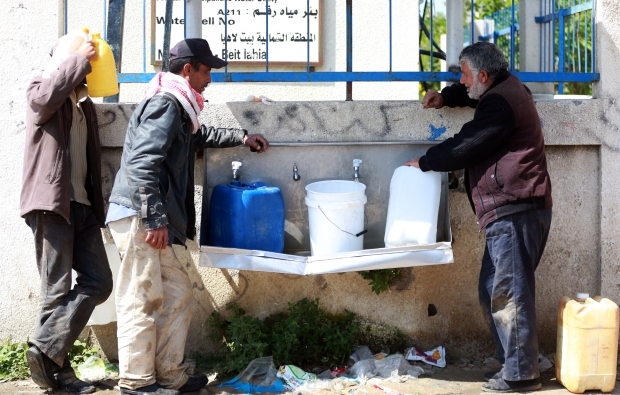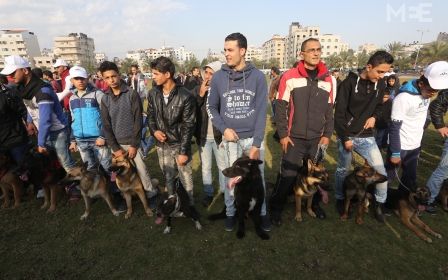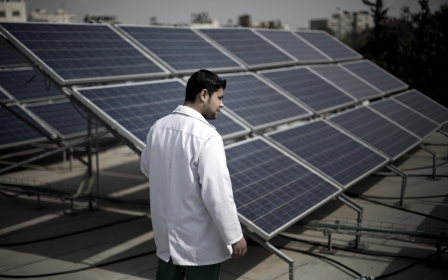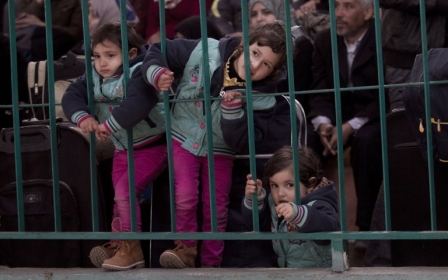'Diseased water': Gazans go thirsty as sewage and pollution poison wells
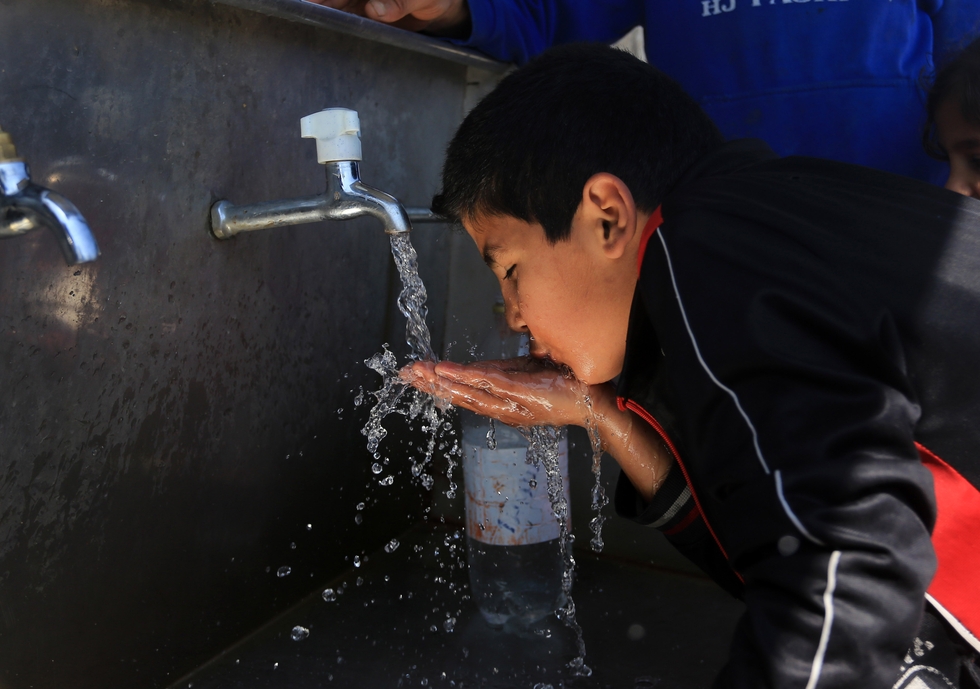
RAFAH, Gaza - Hanan Abdeljawwad is powerless again. The 43-year-old woman has been mostly without electricity for days. And without electricity to power the pump, there is nothing she can do to get water for her family’s daily use.
If she and her family in Rafah are lucky, they will get a small amount of water for domestic use from the pipes under the ground once every three or four days.
Yet this occasional supply is a rarity in most of the strip where access to clean water has become a rare privilege rather than a human right.
In Gaza, the average person consumes 79 litres per capita per day (lcd), according to EWASH, a coalition of humanitarian organisations working on water-related issues in the occupied Palestinian territories, although for some people that figure drops as low as 20 litres.
The World Health Organisation recommends a minimum of 100lcd, while the average in Israel, where almost three-quarters of the country’s water needs are provided for by desalination plants, is 300lcd.
“The water is there, under the ground, but we have no electricity to pump it up,” Abdeljawwad told Middle East Eye, as she stood waiting for the man who sells the water in Rafah to come around.
Even when it does flow, the water that comes through the pipes is unfit for human consumption.
According to Joseph Aguettant, the representative of Terre des Hommes, a Swiss-based NGO working in Gaza, 96 percent of water from Gaza’s coastal aquifer is contaminated with nitrates and chloride.
Only a quarter of wells in Gaza meet World Health Organisation safety levels of less than 250mg of chloride per litre, with one quarter containing more than 1,000mg per litre.
The total number of wells in Gaza that meet WHO safety criteria for both nitrates and chloride is just 14 – or 6.5 percent of the enclave’s wells.
Gaza’s water shortages have been compounded by the long-term infrastructural damage caused by Israel’s 2014 military offensive.
More than 120,000 people are still disconnected from public water networks, and 23 percent of Gaza is not connected to the sewage system.
Damage to the electricity grid and fuel and electricity shortages means that wastewater treatment plants often cannot function, with untreated sewage discharged onto the streets or into the sea.
According to United Nations aid agencies, up to 90 million litres of untreated or partially treated sewage is released into the Mediterranean every day.
Combined with the impact of Israel and Egypt’s blockade, high levels of unemployment and a lack of development projects, officials say Gaza is now facing an unprecedented water crisis with potentially disastrous sanitary and health consequences for its 1.8 million people.
Last year, the UN warned that the enclave could be uninhabitable by 2020.
Efforts by aid organisations to address the issue – including a proposed UNICEF-backed project for a major desalination plant in the central Gazan town of Khan Younis - have also been hindered by the blockade, with 70 percent of materials needed for water and wastewater projects classified by Israel as dual-use items.
Dual use items are considered to have military and civilian applications and are subject to Israeli restrictions.
“The Israeli ‘dual use’ list is excessively restrictive and out of line with international standards,” said Aguettant.
According EWASH, up to 30 water projects in Gaza are at risk of being suspended or cancelled as a consequence of shortages of equipment.
“Through war after war, the existing and already poor water infrastructure in Gaza is repeatedly destroyed or damaged. With a near decade-long blockade, some of the EWASH projects remain delayed, incomplete or inoperative as vital materials take months to reach the local market - if at all,” said Maher al-Najjar, the deputy general director of the Coastal Municipalities Water Utility (CMWU), which is responsible for providing water supplies in Gaza.
Many other officials in Gaza admit that as long as neither the funds nor the materials are available, the prospects of a viable network of desalination plants ever being constructed remain a pipe dream.
“The Gaza Strip accounts for about 1.4 percent of the total space of Palestine, whereas its 1.8 million people represent 17 percent of the Palestinian population,” Mazen al-Banna, deputy head of Palestinian Water Authority in Gaza, told MEE.
“That gives you some sense of the density of population, and the very limited space for farming in Gaza City.”
He said an increase in population and consumption had led to severe shortages of all resources, and alleged that rainwater that should be available to Gazans was being diverted by Israel.
“Gaza essentially relied on aquifer water, from the Karmel Mountains, north of Palestine to El Arish in Egypt,” he said.
About 50-60mn cubic metres of rainwater annually flowed into Gaza down an east-to-west slope from the Israeli side of the border but the expected amount ought to be at least double that figure, Banna said.
“There seems to be a large confiscation of the natural waters by the Israeli side,” he said.
Meanwhile, flooding and drainage issues mean that even most of the rainwater that does reach Gaza cannot be efficiently harvested, with only about 40 percent of it put to use, according to Banna.
Flash floods often result in much of the water being pumped into the sea to save residential areas from being deluged, while even in normal conditions much of the water is unable to sink into the aquifer because of the density of urban buildings.
“We could see the water running along the surface, especially in residential low-lying areas,” said Banna.
Banna told MEE that the situation was worst in southern Gaza, with high levels of sewage and chemical contamination recorded in the southern town of Khan Younis.
“In Khan Younis there is a concentration of nitrate, at about 200 mg per litre. The World Health Organisation say that levels should be no greater than 50 mg per litre for healthy consumption.”
In Rafah, the pumping of seawater into border tunnels by the Egyptian military has also resulted in damage to farmland, according to Subhi Radwan, the mayor of the border crossing town.
For now, those Gazans who can afford it are forced to buy water from private companies, with Palestinians spending an average of eight percent of their monthly expenditure on water consumption, compared with a global average of 3.5 percent.
According to the Israeli B’Tselem human rights organisation, that figure for Israelis living in illegal settlements in the occupied West Bank is just 0.9 percent.
Aguettant said that Terre des Hommes had built reservoirs capable of distributing 6,000 litres of water daily as well as repairing sanitary facilities in 29 primary schools since the 2014 war.
The aid organisation has also developed a video game available on tablets called “Play with Nazeef” to educate children about water sanitation issues.
June Kunugi, UNICEF's State of Palestine Special Representative, told Middle East Eye that there was an "urgent need to ensure that people in Gaza, especially children, can fulfil their right to water".
Despite the problems, she said UNICEF was working with the CMWU and the PWA to complete the construction within months of a seawater desalination plant in southern Gaza funded by a European Union grant.
The plant, which should be completed this summer, will provide 6,000 cubic metres of desalinated seawater per day at affordable prices, to serve 75,000 people in Khan Younis and Rafah,” said Kunugi.
Many people, like Hanan Abdeljwad, who has been mostly unable to afford water since her husband died two years ago, are already entirely dependent on supplies provided by UN and humanitarian aid agencies.
“This water is no good for drinking, this is a diseased water,” she said, gesturing towards the powerless pump. “You can’t even use it for washing your face or your hair.”
Middle East Eye propose une couverture et une analyse indépendantes et incomparables du Moyen-Orient, de l’Afrique du Nord et d’autres régions du monde. Pour en savoir plus sur la reprise de ce contenu et les frais qui s’appliquent, veuillez remplir ce formulaire [en anglais]. Pour en savoir plus sur MEE, cliquez ici [en anglais].


